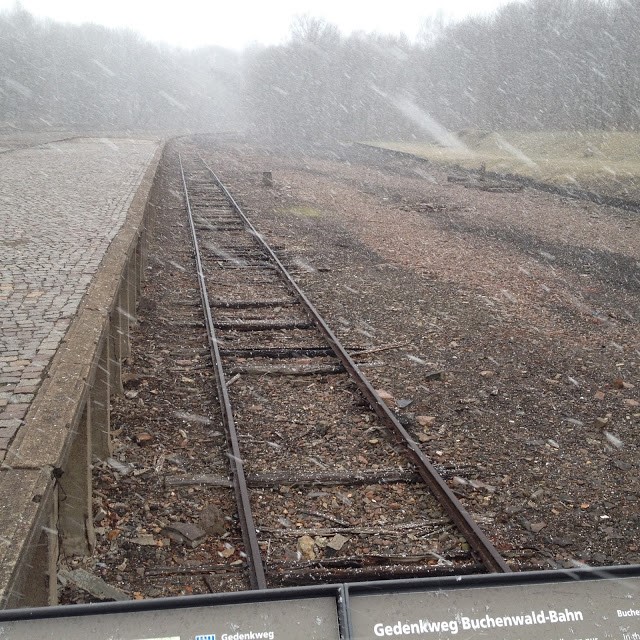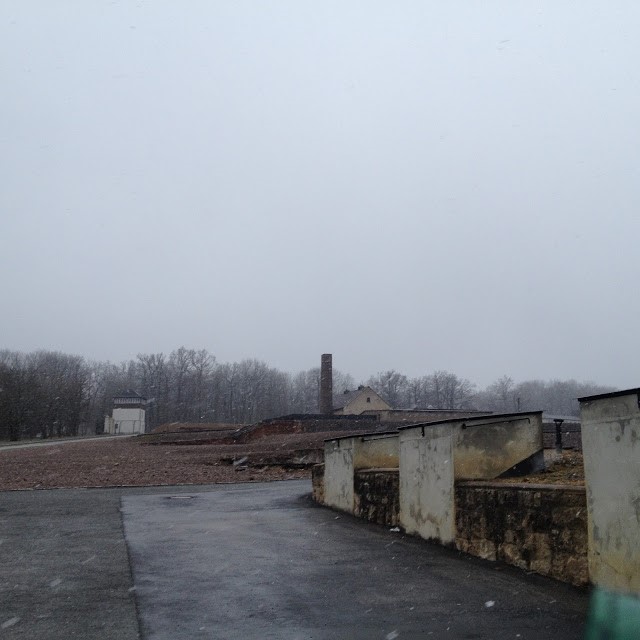Visiting Buchenwald
September 2, 2015

Diana Stanley is a Museum Employee who recently studied abroad in Europe. She wrote as a Field Reporter while she traveled and explored.
As my German relative Paul says, one cannot go to Germany without visiting a concentration camp. The nearest camp, Buchenwald, was a four-hour drive away. After hours of blue skies, clouds covered the sun and snow fell in thick cold flakes like a cruel April Fool’s joke. The snow fall corresponded ominously with our arrival. I could spend an article talking about the horrors or the death tolls, but that is predictable and probably tells readers what they already know. As I ran to the nearest warm building, a different question plagued my mind. How did this get here? Not the camp itself, but the park and museum. What happened to concentration camps after the fall of the Third Reich.

There were technically thousands of concentration camps in Nazi controlled territory. The basic format was a larger camp such as Buchenwald or Dachau which was surrounded by subcamps. Depending on the type of prisoner, they might be sent to a particular camp. Many Soviet POWs and political prisoners were sent to Buchenwald while children or the sick were sent on to an extermination camp, such as Auschwitz.
After the camps were liberated from 1944-1945, camps were put to various uses. Many camps, especially Polish ones, were used as holding places for Nazi war criminals prior to their trials. The oldest camp, Dachau, was used by the Bavarian government as a home for refugees and as a small outpost for the U.S. military. Behind the Iron Curtain, camps were used for darker purposes more in line with their original construction. Buchenwald, among others, was used a concentration camp for those who opposed the Soviet regime. Thousands died in these Soviet camps as well.

In time and the fall of the U.S.S.R., a different question was posed. What should be the ultimate fate of the camps? Many of them had been destroyed by the Nazis as they evacuated, but others remained- especially the larger ones. Some people wanted the camps torn down because of the abomination they symbolized and to prevent camps from becoming sites of pilgrimage for Neo-Nazis. At least one major camp in Belgium was destroyed on this principle.
Others wanted camps preserved as a reminder of the past. Starting with Dachau in the 1960s, official memorials were set up. Unfortunately, there was a certain amount of degradation. Much of Buchenwald has degraded in the decades that have passed, but the essential parts- the train tracks, sanitation building, and crematory are intact. Today, every German student must visit at least one concentration camp or World War II battlefield.
Please visit the Museum to learn more about World War II and this time period in history.